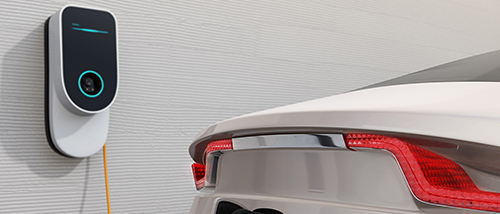Making Cities
EV Ready
Aniket Patange, Head of Artificial Intelligence and Innovation at Hitachi Limited, talks to our host, Pranjal Sharma, about the best practices to prepare our cities today for an EV-ready future.
Smart cities need to get their EV charging blueprints ready. Now.
With climate change taking center stage and countries investing huge sums of money in clean energy, smart cities need to factor value-engineered electric vehicle infrastructure in their planning to make EV charging feasible for a post-fossil-fuel future. Building the necessary infrastructure will positively impact residents' economic growth, environmental goals, and services. The future of transportation will be defined by the sophisticated yet flexible and non-cumbersome EV charging blueprints that city leaders and charging companies should be able to create and implement successfully. Action and leadership at the local level are crucial to making transportation electrification a global reality and providing the necessary charging support for EV drivers wherever they choose to live, work and play.
Governments worldwide are clear that they are investing in EV infrastructure. However, there are multiple challenges and barriers on the road ahead from an organization perspective to a country or a climate perspective. One has to look at the implications of the financial stability of the initiative, justify the return on investment, and balance the cost vs. sustainability factor. Electrified cities require ample charging facilities for residents and commuters. These deployments often place the burden of knowledge and expertise on non-technical managers and administrators, so EV infrastructure should be at the core of smart city planning, not a complicated add-on to be handled later.
Feasibility study
Since EVs may be introduced at a national or a multilateral level, they still must be deployed and planned for at a city level, possibly involving public-private participation (PPP). Hence, a cost-benefit analysis covering the following points would make sense.
What kind of vehicles are going to work? What charging infrastructure and pricing strategy in terms of the utility cost should be put in place? Is the grid geared up to generate sufficient power?
"From a product perspective, from a solution perspective, and a service perspective, we need to map the end-to-end journey to help an organization, a country, or even a private, public, partnership model where an investor, a financer, a technology solution provider and operator are all involved. And then we need to answer the complex questions covering these areas,"
says Patange,
explaining what Hitachi's role is in all this and how they deal with the different aspects- from charging stations to grid connectivity to software that manages the entire system.
"Hitachi will first look at strategically aligning sustainable and financial goals by assessing the existing ecosystem and finding out what is needed to convert to EV vehicles along with operational capabilities and charging infrastructure. The second part of the feasibility study is to determine if the grid is ready in terms of generating power, whether there is a digitization layer, the capability of the grid in terms of how much off-peak and on-peak load it can handle, and what scale of charging is required. You also need an ROI plan, ways to reduce downtime, have less maintenance, and maximum optimal utilization of the vehicles or the charging infrastructure itself."
Practical examples
Giving some practical instances of EV infrastructural success, Patange cites the following examples:
Connecting Geneva airport to the suburbs by implementing a mass rapid transport system of buses with super-fast DC charges ( also called flash chargers), which can charge around 600 kilowatts in just 20 minutes, and 20 seconds. The system can take about 10,000 plus passengers per day on the travel routes, thus helping to reduce 1000 tons of emissions per year and noise pollution.
In France, 24 meters buses with a capacity of 155 passengers per bus with super flash charging DC around 600 kilowatts in just around 40 seconds are operational. In Australia, a similar implementation has been done.

added Patange.
In emerging markets and new technology
"I'm statistically based in the Middle East, North Africa, and Dubai, and many governments have taken the lead. We are hosting COPD 27 and 28 in Egypt this year and next year. We are working with governments in these regions to see how we can do some prototypes, implement these projects on a small scale basis and see how we can scale it up to the next level," he says.
How is it playing out for different categories of consumers?
said Patange
- Tune into:
-
 Apple
Apple
-
 Spotify
Spotify
-
 Amazon Music
Amazon Music

